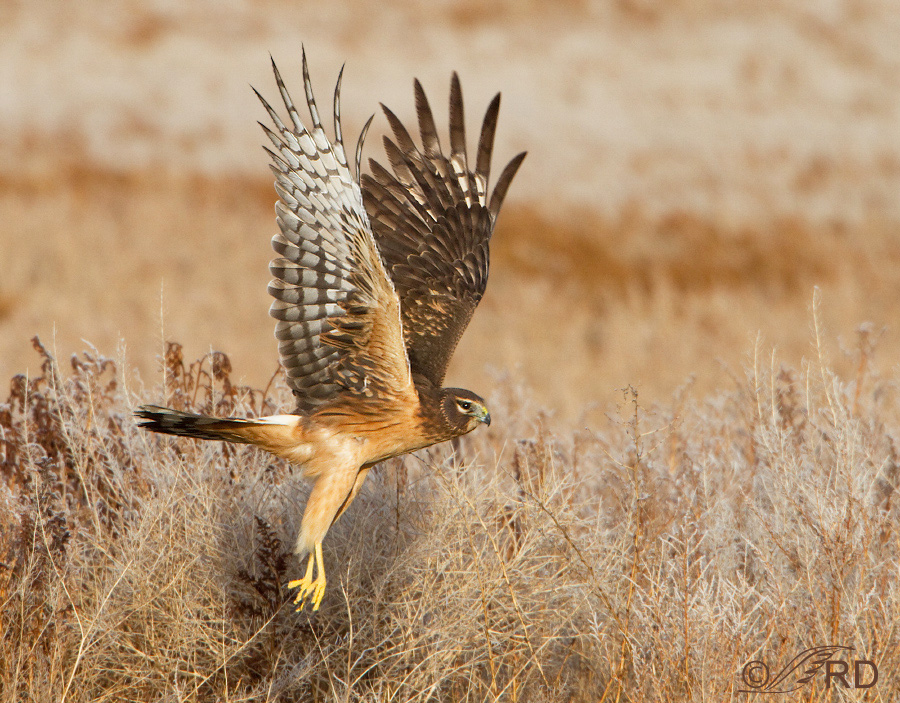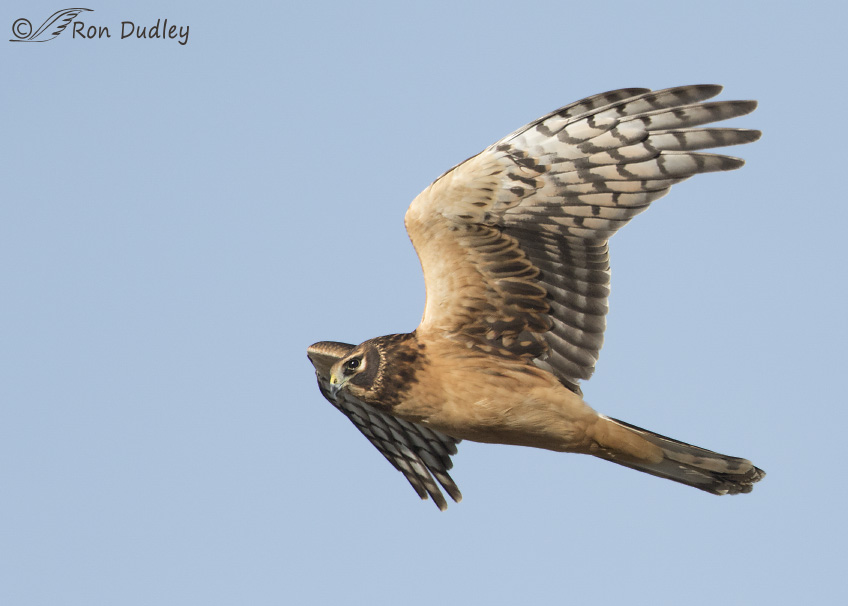Northern Harriers perform a pretty neat trick with their unusually long, slender legs and feet while they’re in flight.

This older photo of a harrier just after take-off at Farmington shows just how long their legs are. It seems logical that those legs and feet could present a potential problem when they’re at cruising speed because anything that might disrupt airflow over their body profile would decrease aerodynamic efficiency and thus require more effort and expenditure of energy to stay airborne. Like most birds, including other raptors, harriers tuck their legs up and against their rump and tail while in full flight but just how effectively do they do it?
 1/4000, f/6.3, ISO 500, Canon 7D Mark II, Canon EF 500mm f/4L IS II USM + 1.4 tc, not baited, set up or called in
1/4000, f/6.3, ISO 500, Canon 7D Mark II, Canon EF 500mm f/4L IS II USM + 1.4 tc, not baited, set up or called in
I photographed this Northern Harrier two days ago as it hunted the edges of Goose Egg Island at Farmington Bay MBR. The image demonstrates how amazingly well their legs and feet become incorporated into the sleek profile of the hawk in flight. Those unusually long appendages seem to virtually disappear, even in such a slender bird. I suspect that their relatively small feet (for a raptor) make this disappearing trick a little easier – in my experience the feet of most other raptors, when tucked, tend to be more conspicuous than those of harriers.
I know I’m not pointing out anything new to most observers but it seems to me that many of us take this disappearing act of bird legs and feet for granted. Some species do it better than others and harriers are some of the best at it.
The adaptations of birds for flight are amazing and this is one I often marvel at in the field, especially in harriers.
Ron


Great post Ron! I love the way these birds fly.
And yet I’m sure that the first engineers of retractable landing gear on airplanes thought they were amazingly clever!
Probably so, Mikal.
The case of the disappearing legs. Solved by Sherlock Dudley.
Love it – and a wonderful image of the sleek perfection that is flight.
Well, I’m of English stock but Sherlock I’m not, EC. Thank you.
Wonderful shots Ron! Happy THANKSGIVING!
Charlotte
Thanks, Charlotte. Same to you.
That as amazing!!! You’re right! I never thought, even a bit, about where the legs go. So cool!
Good, delighted that this post got you thinking about it, Suze. Thanks.
Ron, the predominant rusty color of the first image makes it particularly artistic and appealing. Also, your writing to describe it and the phenomenon you’re addressing is outstanding. Congratulations. I was just photographing the Cinereous Harrier in Chile’s Patagonia, and noticed exactly the same regarding the disappearance of the legs in flight.
I appreciate the comment about my writing, Ricardo. Thank you.
I hadn’t heard of the Cinereous Harrier so I had to look it up…
This is a subject to which I’ve really never given any thought. So more education. It really is amazing how the feet disappear in Harriers in flight. Thanks for opening my eyes yet again.
I loved hearing that, Susan. I really enjoy presenting natural history tidbits that others hadn’t really thought about much but still find interesting. Thank you.
Thanks for pointing this out Ron. I had never thought about this, and you are right about the harriers really hiding their long legs, your second image really shows this. Now I think instead of trying to see their eyes in the viewfinder I will be looking for the legs :-). I think their long legs are for hunting the thick and tall grass, like the Barn Owl’s long legs. Do Short-Eared Owls also have long legs for hunting deep grass?
“Do Short-Eared Owls also have long legs for hunting deep grass?”
I don’t believe so, Ed – at least not as long as those of harriers.
Ron, interesting post. I’ve looked at a lot of images of Northern Harriers, and it seems to my eye, especially when you can’t any yellow of the legs, that they tuck their legs up just within the tail feathers. In many pictures you can’t see their yellow legs and the feathered part of their legs (britches) look like the under tail coverts. I wonder whether this ability to tuck their legs out of sight improves their aerodynamics, their ability to fly low and easy by creating less to no drag.
“I wonder whether this ability to tuck their legs out of sight improves their aerodynamics, their ability to fly low and easy by creating less to no drag.”
I believe you’re right, Dick.
I think the feet are hiding in the britches. Why do you think they’re tucked in the undertail coverts, Dick. Are they as long as the britches under the tail?
Great flexibility and control! Beautiful bird – you really caught the detail.
“Great fliexibility”.
Judy, I read recently that harriers have “double-jointed legs”. Don’t know if it’s true or not – you know how (un)reliable some internet sources can be…
Makes you wonder if the person who invented retractable landing gear for airplanes ever watched Northern Harriers (would have been called Marsh Hawks back in 1925).
Yeah, it does make you wonder, doesn’t it, Jeff.
I remember them still being called Marsh Hawks in the 70’s.
Best Harrier launch shot ever! Such an amazing raptor and so difficult to get shots like these…way to go!
I’m hoping to get more shots like that this winter, Jerry. Snow’s in the forecast so it might even happen soon (cold and snow make harriers easier to get close to around here).
I was going to say quite an amazing disappearing act … but Nancy beat me to it.
Terrific shots.
Thank you, Dave.
Amazing disappearing act! Love the light on this bird showcasing its beautiful underwing feather patterns and colors!
“Amazing disappearing act!”
That’s what I often think when I see these hawks in flight, Nancy.